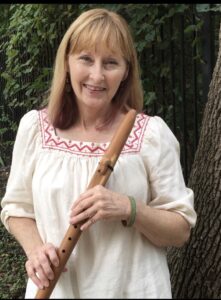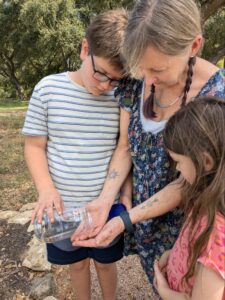When it comes to equine-assisted services, we often focus on the profound emotional and psychological breakthroughs that happen when humans and horses connect. We celebrate the moments when a client finds their voice, builds confidence, or processes trauma through their relationship with these magnificent equine partners. But there’s something fundamental we’re missing in many conversations about this work—something that determines whether these breakthroughs happen at all.
Your body is speaking, whether you realize it or not, and the horses are listening.
The Language Horses Understand Best
When we engage with a horse, we enter a conversation that precedes spoken language. Horses are hardwired to read the subtle communications of movement, posture, and energy that reveal intention, emotional state, and even past experiences. They don’t care about your credentials, your therapeutic techniques, or your carefully crafted treatment plans. They care about what your body is telling them at this moment.
This creates both an incredible opportunity and a significant challenge for those of us working in equine-assisted services. The opportunity lies in the immediate, honest feedback horses provide about our internal states. The challenge is that most of us have never been trained to understand what our bodies are actually communicating.
We live in a culture that has taught us to separate the mind from the body, to treat physical wellness as distinct from mental health. But here’s what science tells us: our brain, body, and nervous system develop together from the very beginning.
In utero, it’s not that the brain develops first and then tells the body to move. Rather, the body begins moving in reflexive patterns, and it’s through this movement that neural pathways form.
Movement builds the brain. And trauma, by altering our movement patterns, reshapes our neural landscape in ways that affect how we think, feel, and relate to the world.
Trauma Changes the Way We Move
When trauma occurs, the body adapts. These adaptations are often protective, and they are usually unconscious.
We see this played out in the bodies of trauma survivors—shoulders turned inward, eyes cast downward, feet turned inward with toes curled toward the midline. This particular posture, interestingly, mirrors one of our earliest intrauterine movements, when a developing baby moves into the protective fetal position.
When someone lives in this contracted, protective posture consistently, they’re not just physically small—they’re emotionally and energetically small too. They’ve learned to make themselves quiet, invisible, safe. And horses, with their exquisite sensitivity to body language and energy, respond to this communication immediately.
A Story of Change
One of our clients, a woman in her 40s, came to us with a history of early and repeated trauma. Her body moved in a way that reflected her past. She walked with her head down, her shoulders rounded, and her toes curled slightly inward. She carried herself as if trying to disappear.
When she made requests of the horses, they ignored her. Some even pushed her out of their space.
Rather than focusing on what she was saying, we focused on how she was moving. We worked with developmental movement patterns—specifically, the push and reach patterns that help restore a sense of agency. These patterns are part of what we teach in the Embodied Developmental Movement Series.
This wasn’t about telling her how to stand. Instead, we invited her to explore “push” in her body – her ability to push into the earth for support, and her experience of pushing on an object, or another person, to rediscover her internal strength. In exploring “push”, we also explore the felt sense of “I am here”.
As she practiced these movements, her nervous system began to shift. Her stance changed. Her energy became more organized.
We didn’t ask her to stand a certain way, we helped her find what she needed to hold herself tall.
Eventually, the horses started to respond to her differently. They began to listen, to connect, and to willingly choose to cooperate with her requests.
The change was not just physical, it was emotional and relational. And it began in the body.
Subtle Adjustments Make a Big Impact
Another client, an executive with a high level of anxiety, presented a different movement pattern. On the surface she appeared confident, straight-backed with her head up. But her movement told a more complex story.
When she reached toward her horse, her weight shifted backward. Her knees were locked, and she stood heavily on her heels. She believed she was grounded. In truth, she was leaning away.
With gentle guidance, she softened her knees and allowed her full foot to meet the ground. For the first time, she felt her toes. This simple change brought her into a more neutral and balanced position. Her horse responded with a deep breath and moved toward her.
That moment marked a turning point. By learning to move in a more integrated way, she experienced a deeper sense of connection—with herself and with her horse. A shift she couldn’t help but take into the rest of her relationships.
Retained Reflexes and Incomplete Patterns
We also see clients who carry reflexes that were never fully integrated during development. (Sometimes it is just a part of themselves who carries the reflex.) The Moro reflex, for example, is a startle response that should complete in infancy. When it remains active, it can show up in adult clients as sudden backward movement, difficulty recovering from surprise, or heightened reactivity.
In equine sessions, this often becomes visible during mounted work. If a horse makes a sudden stop or shift, the client may flinch backward and struggle to return to center. These reactions are not about the horse. They are rooted in the body’s unprocessed history.
By working with these reflexes in an intentional manner, we help clients build the capacity to stay present. We help them complete movements that were never allowed to finish.
A Change the Horses Can See
The people we work with often begin to feel change in their bodies before they see it reflected in their lives. In traditional relationships, others may take time to notice or trust a person’s transformation.
But horses notice right away.
When a client stands more grounded, breathes more deeply, or moves with intention, the horse responds immediately. That response builds trust. It reinforces the change. It gives the client something to hold onto when the outside world is slower to catch up.
This is one of the reasons equine-assisted work is so powerful. It allows clients to experience the impact of their healing as it happens.
The Role of the Practitioner
To do this work well, we must become students of movement. We need to understand how the body was designed to move, how trauma alters that movement, and how we can guide clients in regaining patterns that support regulation and connection.
This is what the Embodied Developmental Movement Series teaches.
Across four progressive trainings, we explore the motor patterns and reflexes that shape human development. We practice observing the body with care and clarity. And we learn how to support small, intentional shifts that lead to meaningful transformation.
The work of developmental movement is about connecting with our most basic, and pervasive, way of experiencing the world. As a facilitator, we can observe gesture, posture, gait, breath, patterns of tension and collapse, and so much more.
We can lean into the subtle nuances of how our clients move through their world, and rebuild patterns from the ground up that support health and harmony.
When you become more fluent in the language of movement, you gain new tools for healing. And you help your clients discover what it means to be fully present in their own bodies—and in their relationships.
Healing rooted in the body
When we help someone move differently, we help them live and connect differently. That is the heart of this work.
If you already practice a somatic lens with your clients, these trainings will add to your toolbox and enrich your skills. See more in your client’s subtleties, get to the root of the issue faster, and have more ways to creatively bring integration and clarity to your sessions.
If you are new to somatic work, or are unsure about your scope of practice, these trainings can offer you what you need to have a solid foundation to offer clients. By attending all four trainings, you create your somatic movement scope of practice.
If you are ready to deepen your practice and explore the intelligence of movement, we invite you to explore the Embodied Developmental Movement Series with Mark Taylor and Bettina Shultz-Jobe and join us.






Recent Comments